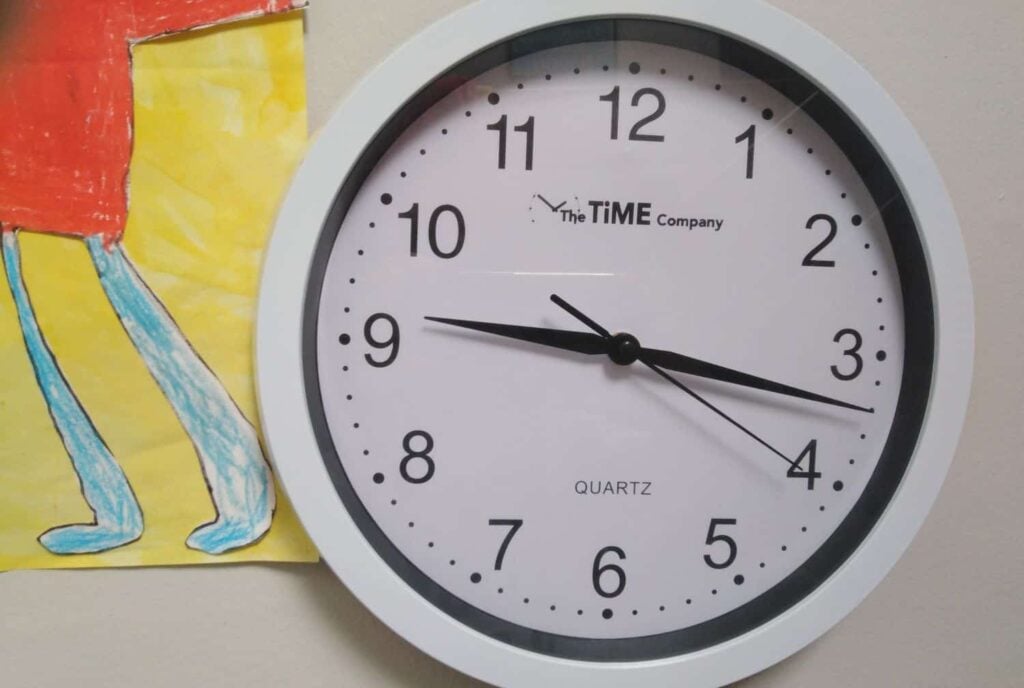Who are the Men in ECE Teaching?
In this paper the following data and analysis is presented on who are the men in ECE teaching:
- An explanation for why men are rare in early child care and teaching
- Why we are starting to see a small increase in the percentage of men to women employed in early childhood services
- What we know about the men who choose to work in childcare and teaching – and their personal characteristics and attitudes
- A timeline covering the past decade of activities to try to raise awareness and increase male representation in early childcare teaching
- The statistics on the number of men working in different types of early childhood services and how the statistics have changed overtime
- Differences between male and female teachers in their qualification levels
- The hours that male and female teachers work and changes in working hours overtime by gender
- Which early childhood services are least and most likely to employ men
- The ethnic groups male teachers are mostly drawn for and how this differs for female teachers
- Opportunities available to employers, recruitment agencies and government to get men into teaching, and opportunities lost. Commentary on optimism for the future.
A more recent paper is: Breaking through the glass doors: men working in early childhood education and care with particular reference to research and experience in Austria and New Zealand, June 2015. European Early Childhood Education Research Journal 23(3):1-12
Paper Prepared by Dr Sarah Alexander.
July 19, 2012.
NZ ECE
In a paper published in the Early Child Development and Care international journal I noted that New Zealand“ has an international image as a trail-blazing ‘social laboratory’” (Alexander, 2008, p. 208). New Zealand was the first country to grant women the right to vote in parliamentary elections in 1893, 33% of our parliamentarians were women in 2008, and women recently held all the key constitutional positions of Prime Minister, Governor General, Speaker of the House of Representatives and Chief Justice. Further, women made up around 46% of the country’s labour force. I argued that the “success of our ‘social laboratory’ has been limited by focusing almost exclusively on women’s disadvantage and largely ignoring areas of disadvantage for men … and this has impacted not only on women and men, but on children also and the quality of family life” (p. 734). However in regard to achieving gender equality for men in traditional women’s occupations New Zealand has not been a trailblazer.
The terms ‘childcare’ and ‘early childhood education’ are interchangeable in New Zealand as childcare centres are also called early childhood education centres and education is considered to be part of every government licensed childcare arrangement. Early childhood education provided by teachers includes kindergartens, daycare centres, licensed home-based (family daycare) providers and the correspondence school. In addition, early childhood education is also provided by parents in playcentres, kohanga reo and language nests for different cultural groups, and playgroups. Early childhood education is hugely popular in New Zealand. As many as 94.5% of all new entrants starting school in 2010 had attended some form of prior early childhood education.
Teacher training requirements have increased over recent years and now the minimum qualification is a 3 to 4 year degree or diploma. Teacher education providers include universities, private training establishments and polytechnics. Credit can be given to students who have completed a degree in another subject and a shortened 1-year degree course is available for these students through universities. The qualification must be one that is recognised as a qualification for working in early childhood education by the NZ Teachers’ Council for the purposes of teacher registration. Once a student gains a teaching qualification, the student applies for provisional teacher registration and embarks on further study and mentoring under a guidance and support programme toward full teacher registration.
The focus of this article is on the men who work in early childhood education services that are staffed by teachers. The professional early childhood education services, or ‘teacher-led’ services as they are called in New Zealand, tend to be dominated by women whereas it is more common to see men (fathers) involved with children in ‘parent-led’ services.
History of Changes and Challenges
In New Zealand the key happenings and turning points influencing the recruitment and employment of men in early childhood teaching over the past two decades have been as follows:
- In the early 1990s there were two major sex abuse cases involving male childcare workers, one was in Christchurch at a Council owned crèche and the second was in Wellington at a hospital childcare centre. The Christchurch creche case made major headlines at the time and has continued to be a story of public interest. The case initially implicated female staff in carrying out abuse and a male teacher. The male teacher, Peter Ellis, who continues to argue his innocence today, was convicted.
- In 1997 a Massey University research report titled “A Few Good Men or a Few Too Many” by Sarah Alexander was released. The research findings made national headlines in the media. It was reported that male teachers were facing discrimination and did not feel welcomed in the profession. Men within the profession were more likely to fear being falsely accused of abuse compared to their female colleagues. Male representation in early childhood teaching had fallen dramatically since 1992.
- In 2006 a discussion paper was released by ChildForum titled “Men at Work: Sexism in Early Childhood Education”. It explained that since the 1997 research study no effective policy changes had been implemented to address the issues facing men in early childhood teaching and the number of men continued to be low. The discussion paper generated publicity and public attention for the issue:
- Television New Zealand made a documentary on sexism in early childhood teaching. The documentary, based on the earlier research and the subsequent discussion paper, was titled “A Few Good Men” and this was aired on national television in a prime Sunday viewing spot.
- The Education Minister reacted and spoke out in support of the need for more men in early childhood teaching.
- ChildForum organised a national summit to bring men working in early childhood education together as a group, for the first time, for support and to discuss issues facing them. The Summit was held in Christchurch, as this was the city of the Peter Ellis crèche abuse case. It gave the male teachers and audience members an opportunity to confront the effects of the case and discuss how best to begin to move forward (See Alexander, 2007).
- The teacher recruitment branch of the New Zealand Ministry of Education, called TeachNZ, produced new promotional handouts and a DVD to encourage men to train as early childhood teachers.
- In November 2008 a network for men in early childhood teaching was formally established by male teachers themselves. The Men in Early Childhood (NZ) Inc, or EC-MENz as its known, provides regional support groups, has continued with and organises the annual Summit, and runs a website.
Men are Rare
Men working in early childhood education with children from birth to 5 years typically face reactions of surprise and amazement from parents because childcare is well known to be a women’s job in New Zealand despite policies for equal employment opportunity and a strong women’s movement. As men are rare in early childhood work, their employers and colleagues in centres tend to regard them as something to brag about and show off as if they are a trophy or prized asset. While men may find this attention is nice, there is also a negative side to being one of a few men in a woman’s job. For male teachers this can take the form of:
- isolation in not having colleagues to work with who are male;
- subtle messages to prove one-self as a teacher because of a perception that men are not as good as/natural as women in caring for young children;
- increased anxiety around being careful in how tasks are carried out – particularly in physical interactions with children; and,
- being singled out for attention and being made to feel uncomfortable, different or out of place as a male in a female environment.
What We Know About the Men
They are seen to be more reliable employees
Employers tend to judge men, rightly or wrongly, as more reliable employees since women are more likely to take parental leave and to resign from their position to follow their partner’s career choices to another city or country.
They are likely to have other work/career training behind them and wider workforce skills and experience before entering teaching
Men are more likely than women to have entered early childhood teaching after working in another career and therefore to have made a considered personal choice. Women on the other hand are more likely to enter early childhood teaching straight from school. Men are more likely to have been in the workforce for some years before deciding to switch to early childhood work and they therefore bring a range of occupational skills and knowledge into their work with children and families.
They are not women, male teachers are men
The involvement of men brings a gender balance into the early childhood workplace. The presence of men can generate more thinking about and awareness of gender equity issues which may be reflected in the educational programme and the social life of the early childhood service. The potential for teachers to recognise and respond to differences in individual children increases when staff are diverse as opposed to more similar in life experiences, perspectives, interests, and attitudes.
Male Teacher Numbers and Characteristics
Table 1 shows changes in the representation of men in early childhood teaching with an ongoing decline from a high of 2.3% men in 1992 to just 1% in 2005, and then rising to 1.8% in 2010.
Table 1 shows changes in the representation of men in early childhood teaching with an ongoing decline from a high of 2.3% men in 1992 to just 1% in 2005, and then rising to 1.8% in 2010.
| TABLE 1. Changes in Representation | |
| Year | Percentage |
| 1992 | 2.30% |
| 2001 | 1.10% |
| 2005 | 1.00% |
| 2007 | 1.10% |
| 2010 | 1.80% |
Table 2 below shows that most male early childhood teachers are clustered in the kindergarten (for children 2.5 years – 5 years) and childcare centres (for children attending on a regular basis from birth to 5 years). There have been few male coordinators in the home-based education sector and only women have been employed by the public service to teach in the early childhood section of the NZ Correspondence School.
TABLE 2. Male and Female Participation in Early Childhood Teaching by Service Type, 1992 – 2010
| Service Type | 1992 | 2001 | 2005 | 2007 | 2010 |
| Kindergarten | 0.8% men 12 men 1,577 women | 1.2% men 21 men 1,722 women | 1.5% men 26 men 1,756 women | 1.5% men 27 men 1766 women | 1.8% men 44 men 2,420 women |
| Childcare (regular & casual) | 2.9% men 142 men 4,703 women | 1.15% men 111 men 9,537 women | 0.9% men 106 men 11,529 women | 1.1% men 139 men 12,924 women | 1.8% men 304 men 16,630 women |
| Home-based education Co-ordinators | 0 men 134 women | 0 men 283 women | 0 men 324 women | 1 man 317 women | 1 man 466 women |
| Correspondence School (working with children in rural areas mostly) | – | 0 27 women | 0 29 women | 0 18 women | 0 men 18 women |
| Total | 2.3% men 154 men 6,414 women | 1.1% men 132 men 11,569 women | 1.0% men 132 men 13,638 women | 1.1% men 167 men 15,025 women | 1.8% men 349 men 19,534 women |
Before the Peter Ellis crèche case men were much more likely to be employed in childcare centres than in kindergartens (as shown in the 1992 statistics). This changed following the abuse case as kindergartens with older children were perceived as providing a safer environment to work in than childcare centres (see research by Alexander, 1997 and papers).
Between 2007 and 2010 the actual number of male teachers (namely in kindergartens, childcare centres and home-based education) increased markedly. A key reason for this was a new government funding policy which gave parents of 3- and 4-year-olds 20 hours of free early childhood education. This led to a rapid rise in the number of children attending early childhood education for longer hours and created a demand for more teachers.
The percentage of male teachers may not have increased during this period had there not been a push at the same time for men to be employed. From 2007 the promotion of the importance of men working in childcare through the work of ChildForum, the Sunday TV documentary, and the formation of the EC-Menz group (a support group for male teachers), together with media interest in doing positive stories on men in ECE appears to have made a difference.
The downward trend in men’s participation in early childhood teaching from the early 1990s is beginning to reverse and we are seeing a trend upward. It is possible that in the coming years New Zealand may once again reach the highest known figure for male participation recorded, which was 2.3% and last held in 1992. However, this will be conditional on public policy support for the idea of getting more men into early childhood teaching, whether we see a renewal of campaigning as happened in 2007/2008, and the willingness of men themselves to engage in this career.
Qualification status
Table 3 below shows that over recent years the gender difference in teacher qualification has increased. In 2001 there was a 7-percentage point difference between female and male teachers. In 2010 this had increased to a 22-percentage point difference with 67% of female teachers being qualified compared to 45% of male teachers.
| TABLE 3. Percentage of Qualified Teachers by Gender | ||
| Year | Men | Women |
| 2001 | 41.70% | 48.90% |
| 2005 | 50.80% | 54.30% |
| 2010 | 45.30% | 67.20% |
One explanation for this difference could be the teacher shortage created by government policy giving 20 hours free early childhood education to parents of 3- and 4-year-old children. The shortage has been for qualified, not unqualified, teachers as the government gives early childhood services a higher rate of funding if they employ more rather than fewer qualified teachers and early childhood services have competed to recruit and employ qualified teachers. Thus, one would expect early childhood employers to give priority to qualified teachers over unqualified teachers and gender would not be a factor. In theory we could have expected to see the percentage of male teachers holding a qualification increase but the data shows this was not the case.
Given the teacher shortage employers may have been more willing to consider male applicants for unqualified teacher and teacher-aid positions and less accepting of women who are unqualified since early childhood teaching is socially regarded as an occupation that is led and provided by women. The cost of training and the number of years of academic study required has increased (now a 3 – 4 year degree has become the standard minimum qualification) and this may be having a greater effect on men compared to women considering (a) whether they and their family can forgo the income they were previously receiving so that they can be a student, and (b) if they feel suited to and want to spend so long in academic study.
Hours of Work
Full-time teaching is defined by the New Zealand Ministry of Education as 25 hours per week or more.
Table 4 below shows little difference between male and female teachers in their take-up of full-time work and with both groups tracking in similar directions.
|
TABLE 4. Percentage of Male and Female Teachers Working Full-time | ||
|
Year |
Men |
Women |
|
2001 |
68.20% |
72.10% |
|
2005 |
82.80% |
79.30% |
|
2010 |
75.50% |
73.10% |
Twenty-five hours a week fits into the primary school day of (9am to 3 pm) and therefore suits teachers with school-aged children who want to work short hours. Should the Ministry of Education redefine full-time as 30 hours or more, or as 40 hours, it would be interesting to see if we get a different picture of whether there is a noteworthy gender difference or not in teacher working hours.
Services Most Likely to Employ Male Teachers
There is no data available on teacher gender in community, public, and privately owned early childhood services. This is something that the Ministry of Education statisticians could be asked to report on. It would be helpful to know whether or not there is any bias against male teachers under certain management operating structures rather than under others.
Ethnicity of Teachers
In 2010, 72% of female teachers were European compared to 61% male teachers. Whereas for Maori (the indigenous people of New Zealand), Pasifika (e.g. Samoan, Fijian) and Asian (e.g. Chinese, Japanese) groups the percentages of male teachers were higher than for female teachers.
|
TABLE 5. Percentage of Male and Female Teachers by Ethnic Group | ||
|
Ethnic Group |
Male |
Female |
|
Maori |
11.70% |
8.20% |
|
Pasifika |
10.80% |
8.00% |
|
Asian |
12.80% |
9.10% |
|
European |
61.30% |
71.90% |
|
Other |
3.10% |
2.80% |
This difference is interesting and the reasons for it should be examined. Some possible questions that research could investigate are:
- Is New Zealand society more accepting of male early childhood teachers from non-European groups?
- Within Maori, Pasifika and Asian cultures is it more acceptable than in European culture to be an early childhood teacher who is male?
- Are recruiters, student selectors, and employers favouring European women over European men?
- Are early childhood teacher education scholarships that target minority ethnic groups more likely to be picked up by non-European men compared to non-European women?
A Time for Optimism
As outlined at the start of this article male representation in early childhood teaching has finally begun to increase having been lower than it has ever been since the early 1990s. In 2010, 1.8% of early childhood teachers were men and if the upward trend continues we could reach and go higher than the figure of 2.3% last held in 1992.
The sex abuse argument, that all men who work in childcare are potential child sex abusers, has faded over recent years. Men are now not commonly citing this as a reason not to enter early childhood teaching. It is also now not a socially acceptable reason for not recruiting and employing men as teachers.
However there is as yet no evidence to the contrary that policies and practices of recruitment, training, and employment are anything but sexist. While there has been an increase in the representation of men in early childhood teaching, the qualification gap between men and women is increasing and men are still very underrepresented in early childhood teaching. Within broader society a shift in parenting and childcare practices has been occurring for some years, bringing with it a high level of acceptability for dads to be primary caregivers and be actively involved in the lives of their young children so it could be expected that the gender balance in early childhood teaching would reflect this.
Opportunities (Lost?) to Get More Men into Teaching
1. The Recession
The economic recession and the increasing unemployment rate especially over the past few years could have been embraced by those involved in teacher recruitment and selection to market this career much more actively to men who were made redundant and to men feeling trapped in their current positions.
2. The Teacher Shortage
The shortage of registered teachers meant that those with a recognised early childhood qualification have been in hot demand and wages rose rapidly. Because Ministry of Education funding is linked to the percentage of qualified and registered teachers centres were financially incentivised to employ registered teachers. There has been a significant increase in the number of kindergartens changing from part-day to all-day hours and new childcare centres opening and needing staff. It has been an ideal time to focus on recruiting men – telling men that pay levels have increased and as teachers, and as male teachers, they will be in hot demand by employers. In 2010 the teacher shortage started to ease as government policy reduced financial incentives to early childhood services to employ more than 80% qualified teachers. The opportunity presented by the teacher shortage to market early childhood teaching as a financially attractive occupation to men has been lost. Traditional male trades, such as in building and construction are now the high paying and high demand jobs to go for, especially after the Christchurch earthquakes and the major repair and rebuilding work that is needed.
3. Scholarships
A newspaper article reported that: “Under national and international human rights laws, temporary measures such as scholarships are allowed to address inequality between the sexes and are deemed not discriminatory; but must be stopped when equality is achieved” (Mussen, 2008). Dr Paul Callister from Victoria University asked the Human Rights Commission to clarify its position on women-only scholarships, saying that women now significantly outperform men in education and therefore there is no longer a justification for such scholarships to remain. The clarification received from the Human Rights Commission was that scholarships for women, men and other groups offered by charitable trusts are exempt from the provisions of the Human Rights Act 1993.
Forward to the Future
When men are no longer rare in early childhood teaching we will be able to celebrate. A male teacher will no longer be treated as a novelty – or as a trophy. Early childhood services will have male and female teachers, reflecting society which is made up of women and men.
Over recent years we have seen an increase in male representation in early childhood teaching, but the figure still remains very low. There are many challenges but there is also a lot of hope. Male teachers in NZ now have a support group and meet regularly on an annual basis. The fear of being falsely accused of child abuse has subsided and is no longer keeping men from considering teaching as a career.
Institutional sexism however remains and has been hard to move. Education ministers come and go every three years at election time and sometimes more often than that. A commitment from one education minister may not be carried over to the next. If there is one thing we have learnt in New Zealand since the early 1990s it is that a significant increase in male representation in early childhood teaching is very unlikely unless there is political will and this is supported across the different political parties. It needs to become part of education policy and implementation is likely to be more successful if there is coordinated effort across the Ministry of Education, recruitment agencies, teacher education providers, and employers. Trying for example, to recruit more men into early childhood teaching through promotional brochures will fail (and did) without a commitment from teacher education providers to select and give preference to male applicants for training.
References for Who are the Men in ECE Teaching
Alexander, S-E. (2008). New Zealand men’s participation in early years work. Early Child Development , 178 (7&8), 733 – 744.
Alexander, S-E. (2007). (Ed.). Proceedings of the first New Zealand Men in Early Child Care and Teaching Summit and a Record of Challenges, Changes and Thinking. Wellington: ChildForum.
Ministry of Education (2010). Education Report: Annual Census of Early Childhood Education Services: July 2010. Wellington: Ministry of Education.
Mussen, D. (2008). Women-only scholarships under spotlight. Sunday Star-Times, 20 July 2008.








